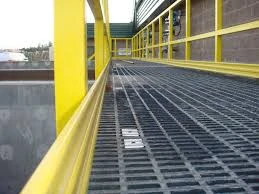Drilling Tools for Tunnel Rock Excavation with Specialized Design
Tools for Drilling Through Rock in Tunnels Specifically Designed Solutions
In the realm of civil engineering and construction, the excavation of tunnels through rocky substrates poses significant challenges. The complexity of drilling through hard rock necessitates the use of specialized tools designed to enhance efficiency, safety, and precision. Various tools have been developed over the years, each tailored to meet the specific demands encountered during tunneling projects.
One of the most indispensable tools in tunnel drilling is the Tunnel Boring Machine (TBM). TBMs are custom-engineered machines that can cut through a variety of rock types while simultaneously installing tunnel linings. They come in various configurations, such as earth pressure balance TBMs and slurry TBMs, each designed for different geological conditions. The rotating cutter head of a TBM employs sharp steel blades and disc cutters, allowing it to break through rock effectively. In addition to their drilling capabilities, these machines offer minimal ground disturbance, making them ideal for urban tunneling applications.
Another crucial tool is the drill and blast technique, where controlled explosives are used to fragment rock. This method involves pre-drilling holes into the rock, filling them with explosives, and detonating them in a controlled sequence. The effectiveness of this technique hinges on precise drilling tools such as down-the-hole (DTH) hammers and rotary drills, which can penetrate hard rock formations with speed and accuracy. The resulting rock fragments are then removed using excavators or conveyor systems, allowing for advancement in the tunnel.
tools for drilling through rock in tunnels, specifically designed

For smaller projects or more confined spaces, hand-held rock drills and jackhammers are often employed. These tools provide the flexibility to drill holes for anchoring, stabilization, or for inserting explosives. Their portability and ease of use make them particularly valuable in tight areas where larger machinery cannot operate.
Diamond wire saws have also become an essential tool for cutting through particularly hard rock. Utilizing a steel wire with diamond segments, these saws can make precise cuts in rock, enabling the creation of portals and shafts that may be necessary in tunneling operations.
Moreover, the advancements in technology have led to the development of robotic drilling systems that can operate autonomously in hazardous environments. These systems are equipped with sensors and artificial intelligence, allowing them to adapt to various geological conditions while optimizing drilling parameters for increased efficiency and safety.
In conclusion, drilling through rock in tunnels is a complex procedure that requires a variety of specialized tools. From large Tunnel Boring Machines to handheld rock drills and advanced robotic systems, each tool is designed to meet specific challenges presented by geological formations. The continuous evolution of these tools not only enhances the efficiency of tunneling operations but also prioritizes safety and minimizes environmental impact. As infrastructure development continues to grow globally, the importance of these advanced drilling solutions cannot be overstated, paving the way for safer and more efficient underground construction projects.
Latest news
-
Oblate Tanks: Space-Saving, Durable Liquid Storage SolutionsNewsAug.27,2025
-
High-Performance Piping System Solutions for Industry & Commercial UseNewsAug.26,2025
-
Precision Fittings: Durable & Reliable Industrial & Plumbing SolutionsNewsAug.25,2025
-
Practical Steps: Unlock Success with Our Proven GuidesNewsAug.24,2025
-
Transport Tanks: Safe, Durable & Efficient Liquid HaulingNewsAug.23,2025
-
High-Quality Piping Systems for Efficient Flow & DurabilityNewsAug.22,2025











